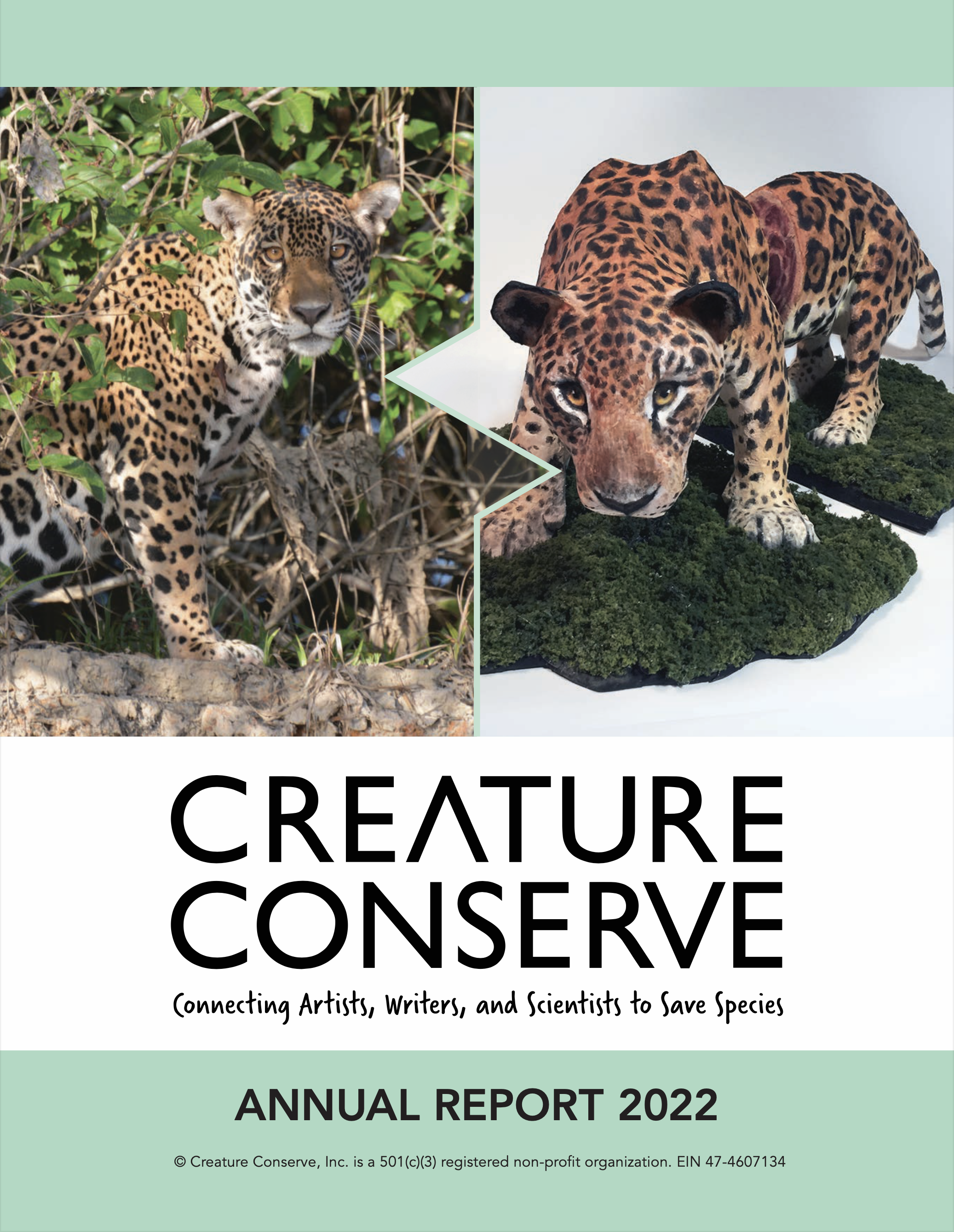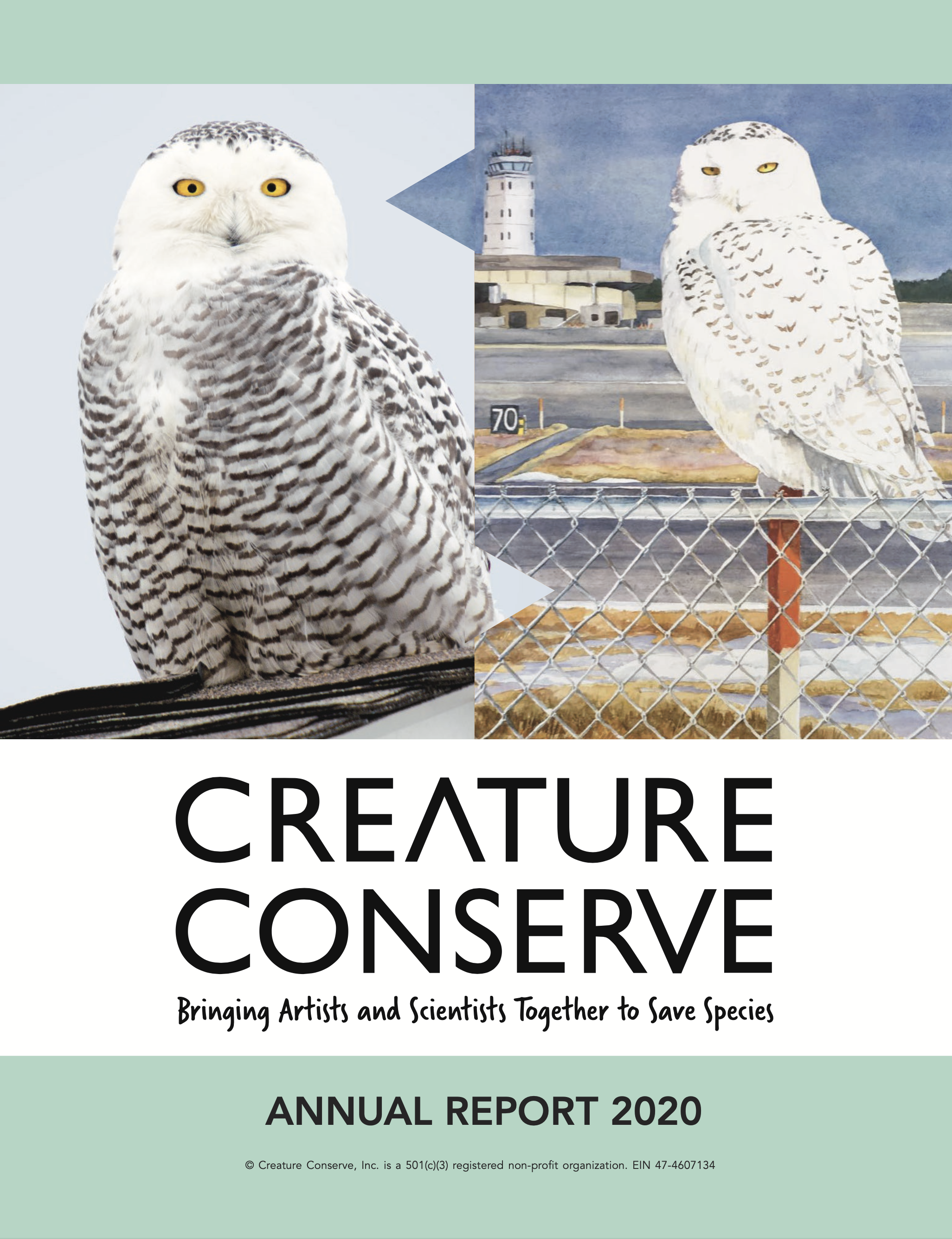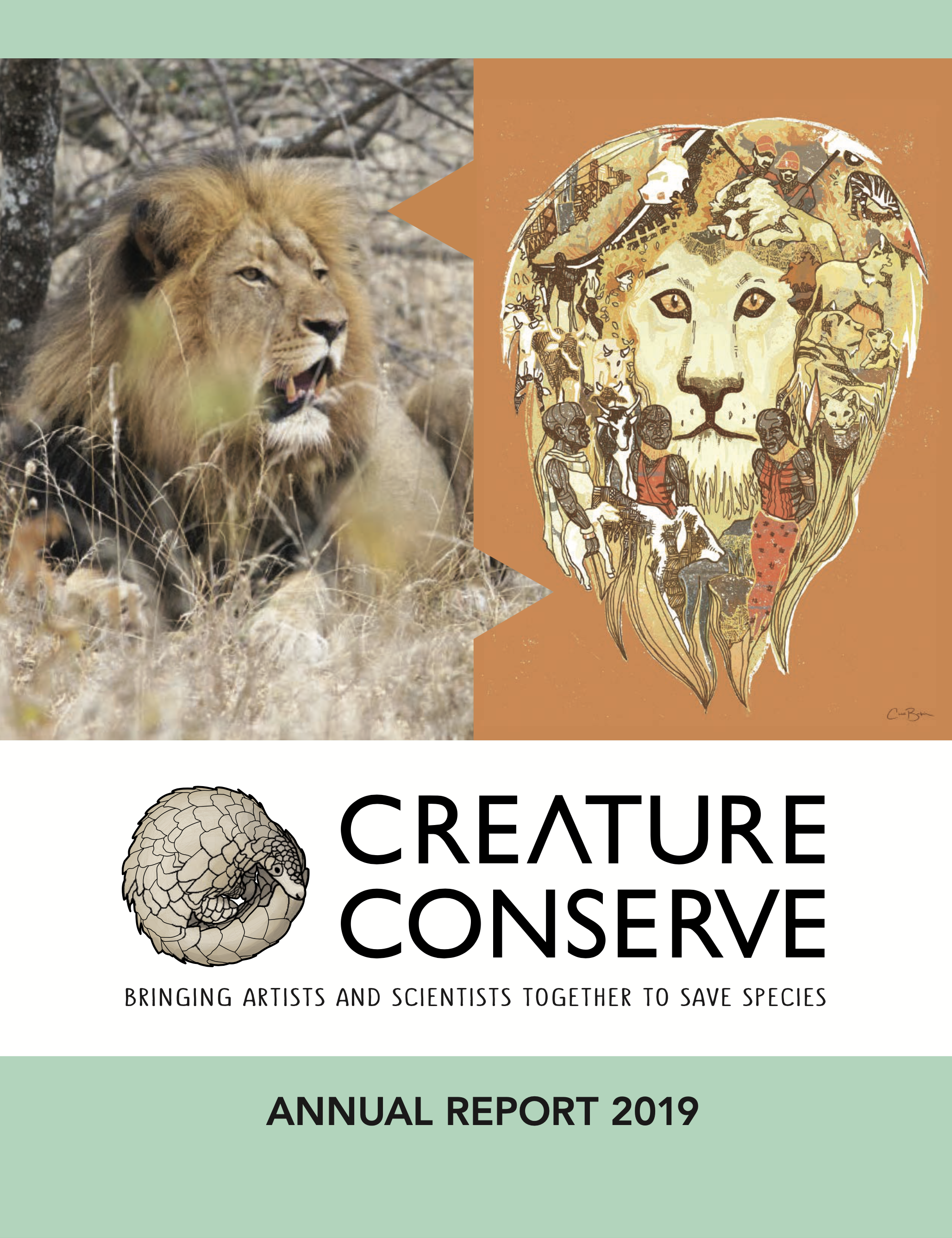About us
Creature Conserve, Inc is a 501(c)(3) based in Rhode Island
Why We Exist: Wildlife populations are declining around the world because of human impacts. We are all part of this problem, yet too few of us are part of the solution. Now is the time for a more inviting and inclusive approach to wildlife conservation, open to diverse perspectives from the arts, humanities, sciences, traditional ecological knowledge, and beyond.
Mission: We are growing a creative community that combines art with science to cultivate new pathways for wildlife conservation.
Jessie Knirsch, Less Fencing, More Migrating, Oil, acrylic, marker, pen, and pencil on canvas paper
Plan: We bring together artists, designers, writers, scientists, traditional knowledge holders, and other experts in a supportive, welcoming space to learn about threats to wildlife, share empathy for animals, exchange ideas, and find opportunities for growth at the intersection of art, science, and conservation.
Our programs include curatorial programs, mentorship, scholarships, and workshops. They take place in person and online. We welcome people at all skill levels, from all backgrounds, and in all countries.
Animals Need Our Help
Animals are central to our lives. We rely on them for companionship, clothing, food, medicine, sport, and spirituality. We live together in our homes, farms, cities, towns, and wilderness areas. We compete for the same basic needs: air, food, water, shelter, room to move, and each other. After millions of years of shared evolutionary history, our species is now the dominant animal. Sadly, our actions have had dire consequences for most of the other animals on Earth. Few will survive our massive presence unless we intervene. At Creature Conserve, we define wildlife conservation as taking action to live in balance with wild animals and protect the habitats that sustain them and us.
A GLOBAL DILEMMA
Wildlife conservation is a global dilemma. It is a solution to a human problem, one that requires a diverse, multiple, interconnected approach. Even as we consider the specific role an organism plays in its environment, we also consider its role in the larger ecosystem, the human-dominated planet. From this perspective, we view wildlife conservation as essential for a just and peaceful world, one that allows wild animals to co-exist with humans and domestic animals in settings ranging from backyards and city parks to farms and nature reserves.
COMBINING ART WITH SCIENCE
Art taps into our emotions and our subconscious. It reminds us that all life is connected; we are animals, too. It deepens our understanding of this interdependency and helps us explore how we feel about animals and our relationships with them. It creates context (cultural, historical, social, political)and space for our conversations about wildlife conservation.It makes the scientific and traditional knowledge we use to make decisions more accessible, meaningful, and real. It also makes the solutions more actionable. Art is far more likely to inspire a change in our behavior than a string of facts.
GROWING ART-SCI PATHWAYS FOR WILDLIFE CONSERVATION
We recognize that many creatives, especially those in underserved communities, have limited access to experts with scientific and traditional knowledge, and few if any opportunities to get involved in on-the-ground conservation. Similarly, few experts working to restore species and their habitats have established connections with artists, designers, and writers. Combining art with science makes it easier for everyone to explore the human connection to nature and create new pathways to a healthier world for all animals. Participants in our programs learn from each other, create and innovate together, develop new skills, and use their combined talents to reach a wider audience and improve conservation outcomes.
OUR WORK
FOR program highlights, IMPACTS and financials, PLEASE SEE OUR ANNUAL REPORTS (PDF)
Banner Artwork by Rachel Frank, Rewilding Offering Hand Oyster






